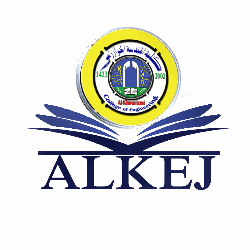Numerical Modeling of Water Movement from Buried Vertical Ceramic Pipes through Coarse Soils
DOI:
https://doi.org/10.22153/kej.2017.06.003Abstract
Problem of water scarcity is becoming common in many parts of the world. Thus to overcome this problem proper management of water and an efficient irrigation systems are needed. Irrigation with buried vertical ceramic pipe is known as a very effective in management of irrigation water. The two- dimensional transient flow of water from a buried vertical ceramic pipe through homogenous porous media is simulated numerically using the software HYDRUS/2D to predict empirical formulas that describe the predicted results accurately. Different values of pipe lengths and hydraulic conductivity were selected. In addition, different values of initial volumetric soil water content were assumed in this simulation as initial conditions. Different values of applied head were assumed in this simulation as a boundary conditions. In general, a good agreement was obtained when comparing the predicted results with available measured values. The results of this research showed that greater spreading occur in vertical direction. Increasing applied heads, initial soil water contents, pipe hydraulic conductivities, cause increasing the size of wetting patterns. Also the results showed that the empirical formulas which can be used for expressing the wetted width and depth in terms of applied head, initial soil water content, application time, pipe hydraulic conductivity, and pipe length, are good and can be used as a designing equations.
Downloads
Downloads
Published
Issue
Section
License
Copyright: Open Access authors retain the copyrights of their papers, and all open access articles are distributed under the terms of the Creative Commons Attribution License, which permits unrestricted use, distribution and reproduction in any medium, provided that the original work is properly cited. The use of general descriptive names, trade names, trademarks, and so forth in this publication, even if not specifically identified, does not imply that these names are not protected by the relevant laws and regulations. While the advice and information in this journal are believed to be true and accurate on the date of its going to press, neither the authors, the editors, nor the publisher can accept any legal responsibility for any errors or omissions that may be made. The publisher makes no warranty, express or implied, with respect to the material contained herein.








